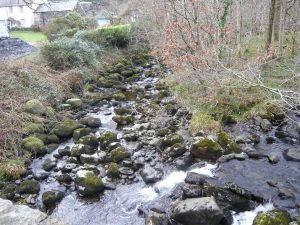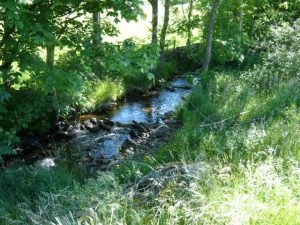Duddon River Association
The Duddon River Association (DRA) represents the interests of the furthest west of the five catchments which comprise SCRT.
The principle river is the Duddon. However, there are three other lesser known rivers which also have a healthy population of eels and wild brown trout, together with a run of sea-trout and salmon. These are the Lickle, Kirkby Pool and Black Beck, all of which discharge into the Duddon Estuary. The River Duddon begins its 13 mile journey to Duddon Bridge at an altitude of some 400 metres on Wrynose pass, running due west. At Cockley Beck it turns south, to flow through what still remains as a true farming community. Since it has no lake, it does not attract the same tourists as do other Lakeland valleys. A hugely important factor for all wildlife.
The River Lickle joins the Duddon a half mile below Duddon Bridge. Three miles up this valley heading north east lies the hamlet of Broughton Mills, above which the river divides into two. The Lickle itself flows from a westerly direction off the flanks of the delightful 529 metre peak known as Caw. While the splendidly named Appletreeworth beck, runs from the opposite direction having begun its life on Torver High Common. On the opposite side of the A593 lies the source of Kirkby Pool, which begins its 9 mile journey to the estuary and the village of Kirkby in Furness as Steers Pool. Numerous other becks flow into it from the side of Woodland fell, to join above the hamlet of Woodland itself. Below this point the river becomes sluggish and is sadly disfigured by a seriously mistaken approach to land drainage. This can be easily seen from where it runs under the A595 at Wreaks End.

Breaking the mould is Black Beck, which is situated on the opposite side of the Duddon Estuary. A sparkling little water, which has its origins at Thwaites Fell on the flank of the mighty 600 metre Black Combe, which towers above the estuary. Flowing past the prehistoric Swinside stone circle it reaches the A595 at Broadgate and then onto Hallthwaites and Green Road, where it meets the tide after a six mile journey through a mixture of fell and farm land.
The fishing interests on these waters are exclusively in the hands of Penny Parrock Angling Company Ltd, Millom Anglers and Ulpha Anglers. There are also a number of private land owners with fishing interests. All of these are represented by The Duddon River Association, whose stated objective is “to improve the natural habitat of the River Duddon and it’s tributaries for the benefit of all wildlife”. This presents a considerable challenge, since problems are created from a number of sources in common with the other four catchments within SCRT. In addition, the River Duddon suffered horrendous damage due to the effects of acid rain in the seventies and eighties which decimated river life and will continue to have a major impact for many years to come. This is especially so on the River Duddon above Cockley Beck.

The DRA are an active group with various volunteer activities. They continue their efforts across the catchment, working together to ensure cohesive catchment monitoring and habitat improvement works.
You can read all about the DRA in their fantastic newsletters. The latest additions are below:
Duddon Dispatches – November 2024
Duddon Dispatches – November 2023
Follow them on –
Instagram: @duddonriverassociation
Facebook Page: fb.com/DuddonRiverAssociation
To view the catchment plan for the Duddon Valley please visit our Becks to Bay partnership website.
